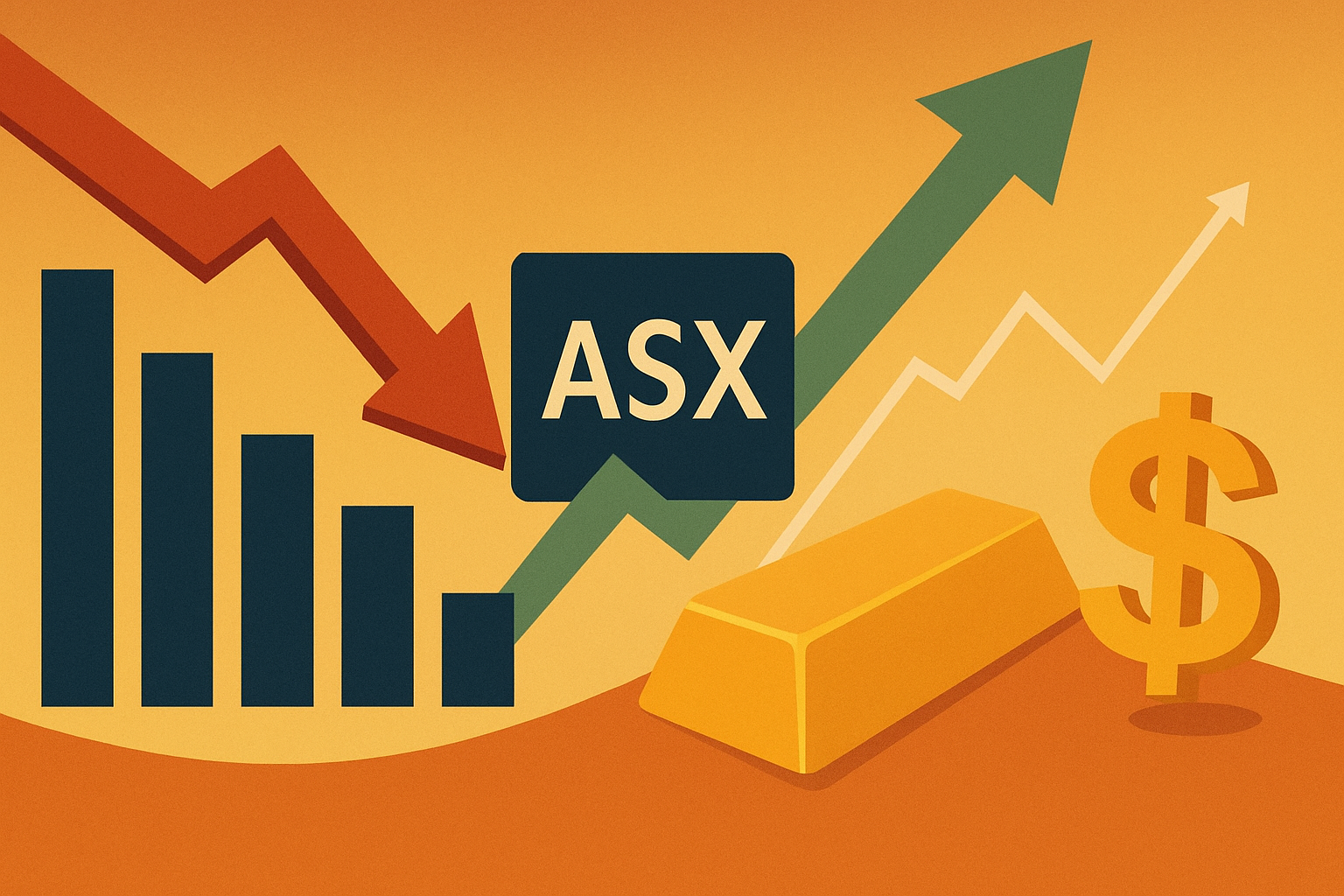Australia’s financial markets were rocked today as the ASX 200 tumbled 1.8%, erasing A$57 billion in value, after a sharp spike in government bond yields fueled investor anxiety. Concerns over fiscal discipline and proposals to restructure the Reserve Bank of Australia (RBA) rattled both equities and fixed-income markets. The turmoil underscored the fragility of investor confidence amid shifting policy dynamics.
At the same time, gold surged to a record high of US$3,546.96 per ounce, highlighting investors’ search for safety in a volatile environment.
Why This Matters for Investors
The sell-off reflects a growing disconnect between fiscal expansion and monetary credibility. Australia’s bond yields surged after reports that the government’s latest budget projections relied heavily on deficit financing, while simultaneously introducing measures to overhaul the RBA’s governance structure.
According to The Australian, investor concerns centered on whether fiscal stimulus could overheat the economy at a time when inflationary pressures remain elevated. Rising yields increase borrowing costs across the economy, compressing equity valuations—particularly in rate-sensitive sectors like real estate, banking, and utilities.
Equities were quick to reflect this stress. Banking giants Commonwealth Bank and Westpac led the decline, each dropping more than 2%, while property trusts shed close to 3%. Technology and export-driven firms fared better, cushioned by a weaker Australian dollar.
Gold Shines in Market Uncertainty
Gold’s rally highlights the asset’s enduring role as a safe-haven hedge. The spike to record highs reflects not only Australian market volatility but also broader investor unease over global fiscal and monetary policy coordination.
As Bloomberg reported earlier this week, global gold ETF holdings have risen for six consecutive weeks, marking the longest stretch of inflows since early 2022. Central bank demand has also remained robust, with emerging markets diversifying away from dollar reserves.
For Australian investors, the surge in gold offers both a hedge against domestic fiscal risks and a proxy for global macro concerns.
Future Trends to Watch
- Central Bank Independence: Any erosion of RBA independence could raise risk premiums on Australian assets, further elevating yields.
- Global Spillovers: Bond market volatility in one region can quickly spread; U.S. Treasuries and European bonds should be monitored closely.
- Safe-Haven Assets: With gold at record highs, watch for renewed demand in other alternatives such as Bitcoin and Swiss franc-denominated assets.
- Equity Rotation: Defensive sectors like healthcare, consumer staples, and energy could attract flows as investors rotate away from cyclical equities.
Key Investment Insight
The ASX’s sharp decline illustrates how fiscal uncertainty and central bank restructuring debates can torque financial markets. Rising yields not only challenge equity valuations but also create ripple effects across credit markets and currency positioning.
For investors, the playbook is twofold:
- Defensive Allocation: Increase exposure to safe-haven assets like gold and defensive equity sectors.
- Global Vigilance: Monitor global policy actions closely, as similar dynamics could unfold in other major economies facing fiscal strain.
Volatility in Australia’s markets is a timely reminder that fiscal credibility and central bank stability remain critical anchors for investor confidence.
Stay with MoneyNews.Today for daily insights into how politics, policy, and macro trends are shaping global market opportunities.





